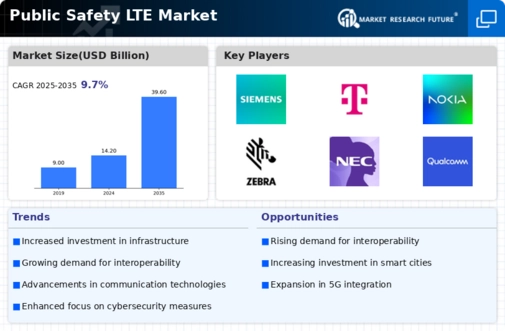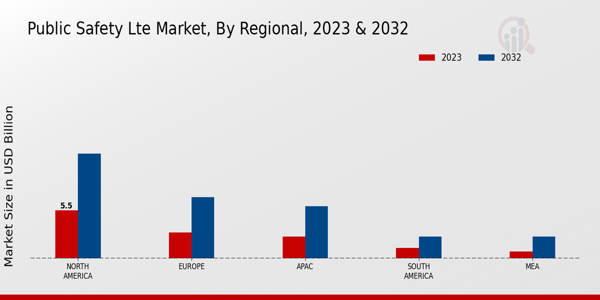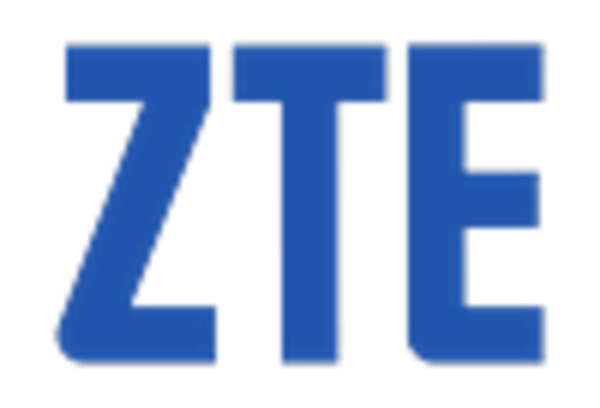-
EXECUTIVE SUMMARY
-
Market
-
Overview
-
Key Findings
-
Market Segmentation
-
Competitive Landscape
-
1.5.
-
Challenges and Opportunities
-
Future Outlook
-
2.
-
MARKET INTRODUCTION
-
Definition
-
Scope of the study
- Research
- Assumption
- Limitations
-
Objective
-
RESEARCH METHODOLOGY
-
3.1.
-
Overview
-
Data Mining
-
Secondary Research
-
Primary Research
- Breakdown of Primary Respondents
-
3.4.1.
-
Primary Interviews and Information Gathering Process
-
Forecasting Model
-
Market Size Estimation
- Bottom-Up Approach
-
3.6.2.
-
Top-Down Approach
-
Data Triangulation
-
Validation
-
MARKET DYNAMICS
-
Overview
-
Drivers
-
Restraints
-
Opportunities
-
MARKET FACTOR ANALYSIS
-
Value chain Analysis
- Bargaining Power of Suppliers
- Threat of New Entrants
- Threat
- Intensity of Rivalry
-
5.2.
-
Porter''s Five Forces Analysis
-
5.2.2.
-
Bargaining Power of Buyers
-
of Substitutes
-
COVID-19 Impact Analysis
- Market Impact Analysis
- Regional Impact
- Opportunity
-
and Threat Analysis
-
Public Safety LTE Market, BY Application
-
(USD Billion)
-
Emergency Services
-
Disaster Management
-
6.3.
-
Transportation Safety
-
Intelligent Transportation Systems
-
Public Safety LTE Market, BY
-
End User (USD Billion)
-
Public Safety Agencies
-
Government Bodies
-
7.3.
-
Private Security Firms
-
Transportation Agencies
-
Public
-
Safety LTE Market, BY Service Type (USD Billion)
-
Managed Services
-
8.2.
-
Professional Services
-
Training and Consulting
-
Public Safety LTE Market, BY
-
Technology (USD Billion)
-
Long-Term Evolution
-
Mobile Broadband
-
9.3.
-
Network Infrastructure
-
Public Safety LTE Market, BY Regional (USD Billion)
-
North America
- US
- Canada
-
Europe
- Germany
- UK
- France
- Russia
- Italy
- Spain
- Rest of Europe
- China
- India
- Japan
- South
- Malaysia
- Thailand
- Indonesia
- Rest
-
10.3.
-
APAC
-
Korea
-
of APAC
-
South America
- Brazil
- Mexico
- Argentina
- Rest of South America
-
MEA
- GCC Countries
- Rest of MEA
-
10.5.2.
-
South Africa
-
Competitive Landscape
-
11.1.
-
Overview
-
Competitive Analysis
-
Market share Analysis
-
11.4.
-
Major Growth Strategy in the Public Safety LTE Market
-
Competitive Benchmarking
-
Leading Players in Terms of Number of Developments in the Public
-
Safety LTE Market
-
Key developments and growth strategies
- New
- Merger & Acquisitions
-
Product Launch/Service Deployment
-
11.7.3.
-
Joint Ventures
-
Major Players Financial Matrix
- Sales and Operating Income
- Major Players R&D Expenditure. 2023
-
Company Profiles
-
12.1.
-
Siemens
-
Developments
-
12.2.
-
TMobile
-
Developments
-
12.3.
-
Nokia
-
Developments
-
12.4.
-
Zebra Technologies
-
12.4.3.
-
Key Developments
-
12.5.
-
NEC Corporation
-
12.5.3.
-
Key Developments
-
12.6.
-
Qualcomm
-
Developments
-
12.7.
-
AT and T
-
Developments
-
12.8.
-
Lenovo
-
Developments
-
12.9.
-
Harris
-
Developments
-
12.10.
-
Cisco Systems
-
12.10.3.
-
Key Developments
-
12.11.
-
Samsung Electronics
-
12.11.3.
-
Key Developments
-
12.12.
-
Motorola Solutions
-
12.12.3.
-
Key Developments
-
12.13.
-
Verizon
-
12.13.3.
-
Key Developments
-
12.14.
-
Hytera Communications
-
12.14.3.
-
Key Developments
-
12.15.
-
Ericsson
-
12.15.3.
-
Key Developments
-
13.
-
Appendix
-
LIST Of tables
-
Table
-
Financial Overview
-
Products Offered
-
Key
-
SWOT Analysis
-
Key Strategies
-
Financial Overview
-
Products Offered
-
Key
-
SWOT Analysis
-
Key Strategies
-
Financial Overview
-
Products Offered
-
Key
-
SWOT Analysis
-
Key Strategies
-
Financial Overview
-
Products Offered
-
SWOT Analysis
-
Key Strategies
-
Financial Overview
-
Products Offered
-
SWOT Analysis
-
Key Strategies
-
Financial Overview
-
Products Offered
-
Key
-
SWOT Analysis
-
Key Strategies
-
Financial Overview
-
Products Offered
-
Key
-
SWOT Analysis
-
Key Strategies
-
Financial Overview
-
Products Offered
-
Key
-
SWOT Analysis
-
Key Strategies
-
Financial Overview
-
Products Offered
-
Key
-
SWOT Analysis
-
Key Strategies
-
Financial Overview
-
Products Offered
-
SWOT Analysis
-
Key Strategies
-
Financial Overview
-
Products Offered
-
SWOT Analysis
-
Key Strategies
-
Financial Overview
-
Products Offered
-
SWOT Analysis
-
Key Strategies
-
Financial Overview
-
Products Offered
-
SWOT Analysis
-
Key Strategies
-
Financial Overview
-
Products Offered
-
SWOT Analysis
-
Key Strategies
-
Financial Overview
-
Products Offered
-
SWOT Analysis
-
Key Strategies
-
References
-
Related Reports
-
LIST OF ASSUMPTIONS
-
North America Public Safety LTE Market
-
SIZE ESTIMATES & FORECAST, BY APPLICATION, 2019-2032 (USD Billions)
-
Table
-
North America Public Safety LTE Market SIZE ESTIMATES & FORECAST, BY END
-
USER, 2019-2032 (USD Billions)
-
North America Public Safety LTE Market
-
SIZE ESTIMATES & FORECAST, BY SERVICE TYPE, 2019-2032 (USD Billions)
-
Table
-
North America Public Safety LTE Market SIZE ESTIMATES & FORECAST, BY TECHNOLOGY,
-
North America Public Safety LTE Market
-
SIZE ESTIMATES & FORECAST, BY REGIONAL, 2019-2032 (USD Billions)
-
Table
-
US Public Safety LTE Market SIZE ESTIMATES & FORECAST, BY APPLICATION, 2019-2032
-
(USD Billions)
-
US Public Safety LTE Market SIZE ESTIMATES & FORECAST,
-
BY END USER, 2019-2032 (USD Billions)
-
US Public Safety LTE Market
-
SIZE ESTIMATES & FORECAST, BY SERVICE TYPE, 2019-2032 (USD Billions)
-
Table
-
US Public Safety LTE Market SIZE ESTIMATES & FORECAST, BY TECHNOLOGY, 2019-2032
-
(USD Billions)
-
US Public Safety LTE Market SIZE ESTIMATES & FORECAST,
-
BY REGIONAL, 2019-2032 (USD Billions)
-
Canada Public Safety LTE Market
-
SIZE ESTIMATES & FORECAST, BY APPLICATION, 2019-2032 (USD Billions)
-
Table
-
Canada Public Safety LTE Market SIZE ESTIMATES & FORECAST, BY END USER,
-
Canada Public Safety LTE Market SIZE ESTIMATES
-
& FORECAST, BY SERVICE TYPE, 2019-2032 (USD Billions)
-
Canada Public Safety
-
LTE Market SIZE ESTIMATES & FORECAST, BY TECHNOLOGY, 2019-2032 (USD Billions)
-
Canada Public Safety LTE Market SIZE ESTIMATES & FORECAST,
-
BY REGIONAL, 2019-2032 (USD Billions)
-
Europe Public Safety LTE Market
-
SIZE ESTIMATES & FORECAST, BY APPLICATION, 2019-2032 (USD Billions)
-
Table
-
Europe Public Safety LTE Market SIZE ESTIMATES & FORECAST, BY END USER,
-
Europe Public Safety LTE Market SIZE ESTIMATES
-
& FORECAST, BY SERVICE TYPE, 2019-2032 (USD Billions)
-
Europe Public Safety
-
LTE Market SIZE ESTIMATES & FORECAST, BY TECHNOLOGY, 2019-2032 (USD Billions)
-
Europe Public Safety LTE Market SIZE ESTIMATES & FORECAST,
-
BY REGIONAL, 2019-2032 (USD Billions)
-
Germany Public Safety LTE Market
-
SIZE ESTIMATES & FORECAST, BY APPLICATION, 2019-2032 (USD Billions)
-
Table
-
Germany Public Safety LTE Market SIZE ESTIMATES & FORECAST, BY END USER,
-
Germany Public Safety LTE Market SIZE
-
ESTIMATES & FORECAST, BY SERVICE TYPE, 2019-2032 (USD Billions)
-
Table 25.
-
Germany Public Safety LTE Market SIZE ESTIMATES & FORECAST, BY TECHNOLOGY, 2019-2032
-
(USD Billions)
-
Germany Public Safety LTE Market SIZE ESTIMATES &
-
FORECAST, BY REGIONAL, 2019-2032 (USD Billions)
-
UK Public Safety LTE
-
Market SIZE ESTIMATES & FORECAST, BY APPLICATION, 2019-2032 (USD Billions)
-
Table
-
UK Public Safety LTE Market SIZE ESTIMATES & FORECAST, BY END USER, 2019-2032
-
(USD Billions)
-
UK Public Safety LTE Market SIZE ESTIMATES & FORECAST,
-
BY SERVICE TYPE, 2019-2032 (USD Billions)
-
UK Public Safety LTE
-
Market SIZE ESTIMATES & FORECAST, BY TECHNOLOGY, 2019-2032 (USD Billions)
-
Table
-
UK Public Safety LTE Market SIZE ESTIMATES & FORECAST, BY REGIONAL, 2019-2032
-
(USD Billions)
-
France Public Safety LTE Market SIZE ESTIMATES &
-
FORECAST, BY APPLICATION, 2019-2032 (USD Billions)
-
France Public Safety
-
LTE Market SIZE ESTIMATES & FORECAST, BY END USER, 2019-2032 (USD Billions)
-
France Public Safety LTE Market SIZE ESTIMATES & FORECAST,
-
BY SERVICE TYPE, 2019-2032 (USD Billions)
-
France Public Safety
-
LTE Market SIZE ESTIMATES & FORECAST, BY TECHNOLOGY, 2019-2032 (USD Billions)
-
France Public Safety LTE Market SIZE ESTIMATES & FORECAST,
-
BY REGIONAL, 2019-2032 (USD Billions)
-
Russia Public Safety LTE Market
-
SIZE ESTIMATES & FORECAST, BY APPLICATION, 2019-2032 (USD Billions)
-
Table
-
Russia Public Safety LTE Market SIZE ESTIMATES & FORECAST, BY END USER,
-
Russia Public Safety LTE Market SIZE ESTIMATES
-
& FORECAST, BY SERVICE TYPE, 2019-2032 (USD Billions)
-
Russia Public Safety
-
LTE Market SIZE ESTIMATES & FORECAST, BY TECHNOLOGY, 2019-2032 (USD Billions)
-
Russia Public Safety LTE Market SIZE ESTIMATES & FORECAST,
-
BY REGIONAL, 2019-2032 (USD Billions)
-
Italy Public Safety LTE Market
-
SIZE ESTIMATES & FORECAST, BY APPLICATION, 2019-2032 (USD Billions)
-
Table
-
Italy Public Safety LTE Market SIZE ESTIMATES & FORECAST, BY END USER, 2019-2032
-
(USD Billions)
-
Italy Public Safety LTE Market SIZE ESTIMATES &
-
FORECAST, BY SERVICE TYPE, 2019-2032 (USD Billions)
-
Italy Public Safety
-
LTE Market SIZE ESTIMATES & FORECAST, BY TECHNOLOGY, 2019-2032 (USD Billions)
-
Italy Public Safety LTE Market SIZE ESTIMATES & FORECAST,
-
BY REGIONAL, 2019-2032 (USD Billions)
-
Spain Public Safety LTE Market
-
SIZE ESTIMATES & FORECAST, BY APPLICATION, 2019-2032 (USD Billions)
-
Table
-
Spain Public Safety LTE Market SIZE ESTIMATES & FORECAST, BY END USER, 2019-2032
-
(USD Billions)
-
Spain Public Safety LTE Market SIZE ESTIMATES &
-
FORECAST, BY SERVICE TYPE, 2019-2032










Leave a Comment